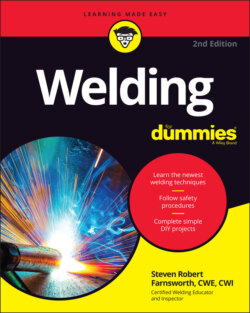Читать книгу Welding For Dummies - Steven Robert Farnsworth - Страница 58
Checking for leaks
ОглавлениеYour welding shop is bound to contain pressurized containers full of liquids or gases. Take special care to ensure that none of those containers (or the tools that you attach to them) has leaks. Checking for leaks is a simple process:
1 Mix one teaspoon of dish soap in a spray bottle full of water.
2 Spray the mixture onto any area of a pressurized container that is likely to have a leak.Fittings and valves are usually the most likely sources of a leak.
3 Look and listen closely for bubbles.If you see bubbles or hear a bubbling noise, that probably means you have a leak. If the bubbles are popping up near a fitting, use a wrench to tighten up the fitting. Then reapply the soapy water and check again for bubbles. If you see bubbles on or near a valve, it may be time to replace the valve.
If you’re using any oxyacetylene equipment (see Chapters 11, 12, and 13), you know when you have a leak if you smell garlic. Manufacturers now add a compound to the acetylene that makes it smell like garlic; if you get a waft of garlic smell and think you may have a leak, use the soapy water method I describe in this section to find out where the leak is coming from. (Of course, the garlic smell may also be the result of the pizza you had for lunch, in which case you may just want to grab a stick of gum.)
White thread seal tape can be useful for making sure that fittings and valves don’t leak, but be sure you never use the tape on brass fittings because brass fittings seal themselves.
Hoses are also common sources of leaks, so make sure to inspect your hoses frequently for nicks and burned sections. And please don’t try to fix your hoses with tape! Tape fixes aren’t reliable, and they don’t last very long. Figure 3-4 shows you what a leaking oxygen hose looks like.
